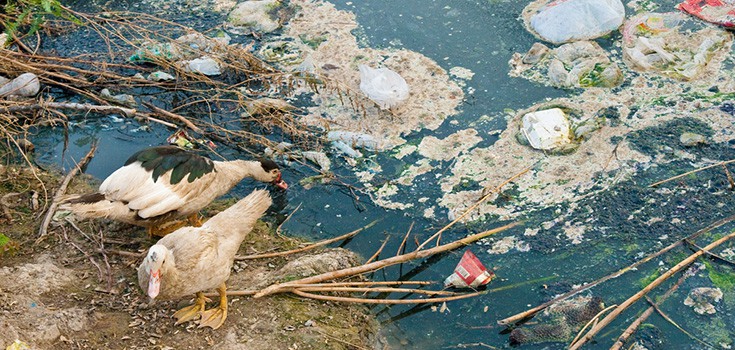World’s Oceans ‘Plasticized’ and Trashed, Finds Research Ship

The world’s major oceans are full of concerning amounts of ‘plastic waste’ that amounts to a colossal ‘synthetic soup’ according to new reports from a large research ship that has set out to determine the condition of the world’s oceans. What is known as the ‘Great Pacific Garbage Patch’, which is essentially a large mass of trash inhabiting the Pacific ocean, is reportedly only a small extent of the contamination. In fact, the scientists have gone as far as to say that the oceans are ‘plasticized’, or laced with synthetic waste.
The expedition was organized by two leading nonprofit groups — the 5 Gyres Institute and the Algalita Marine Research Foundation. Once funded and set to sea, the 72-foot yacht is now voyaging from the Marshall Islands to Japan. Nicknamed the Sea Dragon, the boat was provided by Pandea Exploration and seeks to test sea contamination levels throughout the massive journey — particularly of interest, however, is the previously unexplored western half of the North Pacific gyre (where high amounts of plastic debris are driven via the current). Stationed right below the 35th parallel, the area is home to the famous Great Pacific Garbage Patch.
All in all, the crew seeks to observe how the trash affects marine life and the extent to which it is present. Led by former United States marine and Ph.D student Marcus Eriksen, the findings are quite shocking. According to Eriksen:
“We’ve been finding lots of micro plastics, all the size of a grain of rice or a small marble,” he stated. “We drag our nets and come up with a small handful, like confetti — 10, 20, 30 fragments at a time. That’s how it’s been, every trawl we’ve done for the last thousand miles.”
The startling findings, he said, confirmed his view that the oceans are heavily ‘plasticized’. Eriksen believes that virtually everywhere you go in the ocean, you will find plastic waste. This statement is perhaps most concerning when considering the fact that Eriksen has actually sailed through all five gyres, and has therefore seen mass contamination on a planetary scale. Looking for large objects like overturnes boats, refrigerators, and other big appliances, Eriksen is also concerned about the amount of toxins being emitted from these items.
“We’ll get an idea of how much is out there, what’s going on and what it’s carrying with it, in terms of toxins,” he said.
